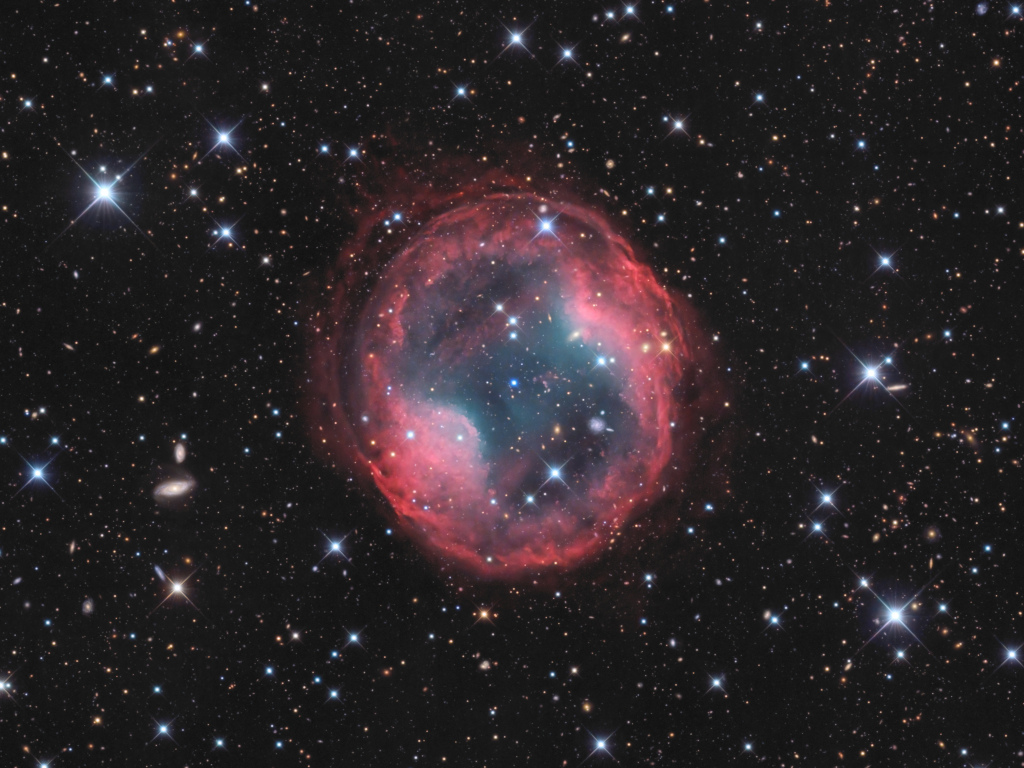That's a great image!

As a Color Commentator, I need you to look at the colors first. Note that the central white dwarf star inside the planetary nebula is the bluest object in the image, because it is the hottest thing here. The "surface temperature" of the white dwarf is probably at least 50,000 K, and it could be more.
The reason why the white dwarf is so hot is because it is the naked exposed core of what used to be a normal star. Our own Sun, after all, has a core temperature of about 15 million K. But the core of our Sun is wrapped inside a radius of some ~600,000 kilometers (some ~400,000 miles) of thick gas, which brings the mean temperature of the photosphere (the visible "surface") of the Sun down to some 5,777 K. Thank you, that's much better than 15 million K!
The white dwarf inside Jones-Emberson 1 has shrugged off all the gas that once surrounded its blisteringly hot core. You can see the remnant of that former cosy gas coat as the quite spherical red shell surrounding the white dwarf. The roundness of the outer part of the shell suggests to me that the gas was ejected quite symmetrically in all directions, and this in turn suggests to me that the central star was a single star. The red color of the shell shows that it is rich in hydrogen, and that the hydrogen has been ionized by the harsh ultraviolet light from the central star.
But the inner edge of the red shell is not spherical. This suggests to me that the white dwarf is emitting some sort of jets, to carve out the "fat figure eight shape" that we see in the inner part of the planetary nebula. Obviously those "jets" would be nothing like the jets from a pulsar, but maybe possibly maybe they would be like a very little baby brother of the pulsar jets:
[youtube]
https://www.youtube.com/shorts/IhamKR0bYm4[/youtube]
Note while the inner "fat figure eight shape" is very rarefied, we do see a bit of green here. The green color comes from doubly ionized oxygen. It turns out that extremely rarefied concentrations of gas near extremely energetic sources is precisely the sort of conditions that favor this kind of ionization in oxygen.
Also note the absolute wealth of background galaxies here! Wowzers!!!

Most of the background galaxies are yellow-orange in color. They are reddened mostly by distance, because their light has been "stretched" to longer, redder wavelengths by the expansion of the Universe. But several of them are also intrinsically yellowish, because they contain no (or extremely few) young stars.
Anyway, great image!

Ann
 Jones-Emberson 1
Jones-Emberson 1